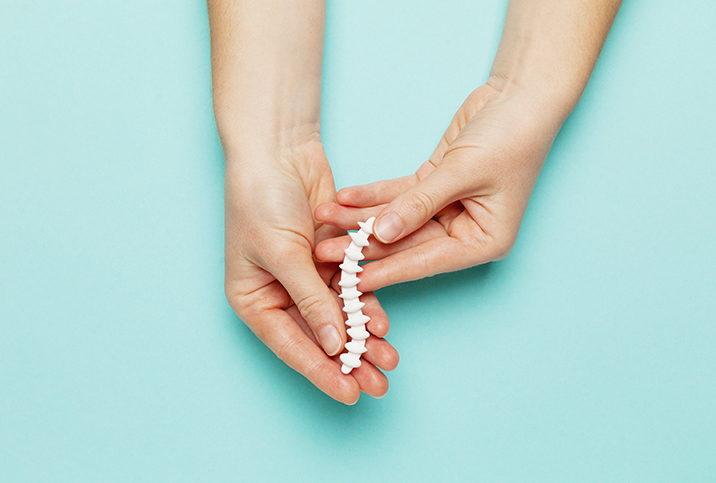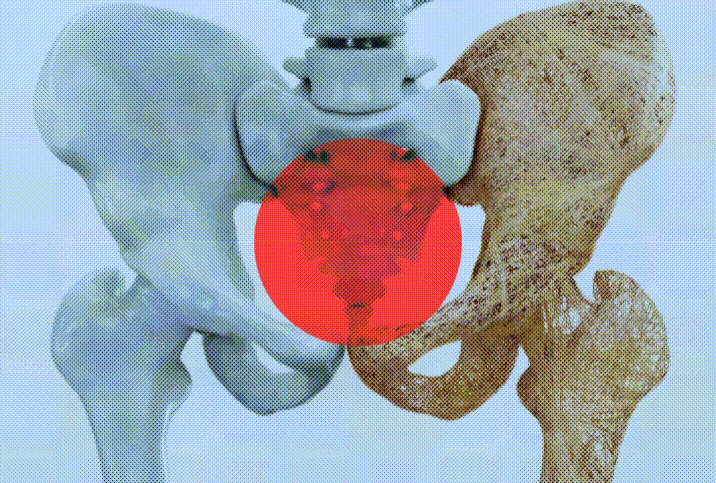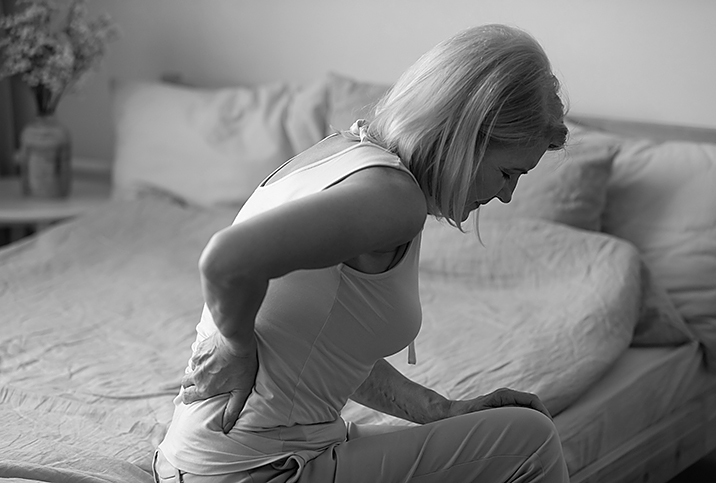Please Stop Believing These 5 Osteoporosis Inaccuracies

If you hear the word "osteoporosis," the image of a frail and thin elderly woman probably comes to mind, right?
Well, banish that image. Because while it is true that women are more at risk for breaking a bone due to osteoporosis than men, the deteriorating bone condition is not limited to older females only. Osteoporosis in men is fairly common.
More than 10 million Americans—both male and female—have osteoporosis, according to the National Osteoporosis Foundation (NOF). And an additional 44 million have low bone density, a potential precursor to the disease.
Both osteoporosis and low bone density are serious health conditions that can put someone at risk of breaking a bone and developing other complications such as impaired mobility, mental health disorders and heart disease.
To help combat the myth that osteoporosis is merely a "little old lady disease," and to help ensure your bones stay protected, here are some of the most common osteoporosis inaccuracies and the truths you need to know.
Inaccuracy #1
Osteoporosis can’t happen to men
"Males can absolutely develop osteoporosis," said Jason DeLeon, M.D., a family medicine doctor and a founding partner of D&G Optimized Wellness and Hormones in Lakeland, Florida.
Men are more likely to break a bone due to osteoporosis than they are to develop prostate cancer, and the mortality risk from a hip fracture in a man with osteoporosis is much higher than in a woman, DeLeon added.
One in 4 men is at risk for a bone fracture from osteoporosis, according to the NOF. And if a bone fracture does occur, a man is more likely to deteriorate to the point of death because of it.
"In emergency departments across the globe, we often see that something as simple as a hip fracture in an elderly woman will lead to their ultimate demise—a mortality risk of 18 percent in the first year following a fracture," DeLeon said. "Given the progress that has been made for fracture repair over the last 50 years, this is a sad but irrefutable reality."
Men’s first-year mortality after an osteoporosis fracture, on the other hand, he claimed, can be as high as 32 percent.
Inaccuracy #2
Osteoporosis is worse in women because of estrogen
Estrogen deficiency does play a role in female osteoporosis. It is linked with male osteoporosis, too, as described in the International Journal of Endocrinology in 2017. Both men and women need adequate estrogen levels to support healthy bones and aging, along with other factors such as physical activity, adequate nutrition and healthy lifestyles.
"When men age, their androgen (hormone) levels decrease and the functional activity of these hormones also decreases," DeLeon said. "Often, males have undetectable levels of estradiol (estrogen). This suggests that estrogen deficiency, like in females, is a leading cause of male osteoporosis."
Estrogen (estradiol), he added, is protective from a cardiovascular standpoint and is involved in bone formation, helping to further prevent bone loss and osteoporosis. So it is an essential piece of the osteoporosis puzzle.
"It’s the hormone estradiol that is the main driving factor to protect men and women from osteoporosis," DeLeon said.
Inaccuracy #3
Osteoporosis only affects your bones
All right, so say you develop osteoporosis or are at risk for the condition. It’s no big deal if your bones are a little less than optimally strong, right? After all, osteoporosis only affects your bones, right?
Wrong.
Yes, the disorder puts you at risk of breaking a bone and being out of commission. But its consequences and associations can have an impact on your sexual health, too, according to Rahul Shah, M.D., a board-certified orthopedic spine surgeon and partner with Premier Orthopedic Spine Associates in Vineland, New Jersey.
"Fractures resulting from osteoporosis can temporarily impact libido while the healing process takes place," Shah explained. "If the fractures heal improperly, leading to abnormal positioning or deformities, it may make sexual performance more difficult or painful, ultimately affecting the pleasure experienced during sexual encounters."
The underlying causes of osteoporosis, such as testosterone deficiency, could affect your libido, so it’s important to observe all facets of osteoporosis to prevent complications.
"A man with low testosterone could expect to have decreased libido, infrequent erections, decreased erectile strength, infertility and depressed mood," DeLeon added. "As you can imagine, each of these factors interplay and contribute to one another."
Inaccuracy #4
Drinking milk cures osteoporosis.
Despite the effectiveness of the "Got milk?" campaigns of the 2000s, drinking cow’s milk is not all you need to cure osteoporosis. In fact, some men develop osteoporosis due to an underlying hormone deficiency, specifically low levels of testosterone. A glass of milk will not solve that.
Testosterone plays a role in maintaining bone density, Shah said, so men with low testosterone (low-T) levels may face an increased risk for osteoporosis. That's whether their low-T is due to hypogonadism (when the testicles don’t produce enough testosterone) or other causes.
This means if you’re a man with osteoporosis, you want to get adequate levels of calcium and Vitamin D—yes, they play a role in bone health—but you want to talk to your doctor about addressing the root cause of the disorder.
If your testosterone levels are low, your doctor will work on an individualized treatment plan, which may include testosterone replacement therapy, to help support your bone health and other health markers that are affected by low-T.
A 2020 systematic review in BMC Endocrine Disorders found that testosterone therapy for males with osteoporosis could improve certain impairments, including sexual function, without any additional risk to heart or prostate health.
Inaccuracy #5
There’s nothing you can really do about osteoporosis
If you’re a man with osteoporosis, DeLeon said the condition is most likely to be secondary to a reversible factor such as corticosteroid therapy, alcoholism, hypogonadism and/or testosterone deficiency.
In other words? It’s treatable.
You want to treat osteoporosis—-especially if it is caused by low testosterone—because left untreated it can lead to a host of medical complications.
"Low testosterone levels in the aging male are associated with several comorbid conditions including myocardial infarction, vascular atherosclerosis, type 2 diabetes, hypertension, Alzheimer’s disease, macular degeneration and obesity," DeLeon said.
Men with certain risk factors could be more at risk for osteoporosis, Shah said, so they should talk to their doctor about treatment or proactive measures. Risk factors for male osteoporosis include the following:
- Being age 70 or older
- A family history of osteoporosis or fractures due to bone fragility
- Low testosterone levels
- Unhealthy lifestyle practices, such as smoking, excessive alcohol consumption, imbalanced nutrition and low physical activity levels
- Certain medical conditions, such as rheumatoid arthritis, chronic kidney disease and hyperthyroidism
- Corticosteroids, anti-seizure medications and certain cancer treatments
- Low body weight
- Current anorexia nervosa or a history of the condition
- Vitamin D and calcium deficiency
"It's essential for men to be aware of these risk factors and take appropriate steps to maintain good bone health," Shah explained.
He recommended you reduce your risk of complications from osteoporosis by doing a couple of things. One, talk with your doctor. Two, take steps to protect your bone health, such as engaging in regular weight-bearing and muscle-strengthening exercises, consuming a balanced diet rich in calcium and vitamin D, avoiding smoking and consuming alcohol in moderation.


















